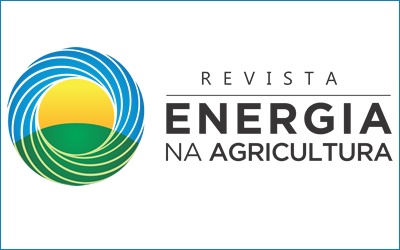SUBSTRATO EXAURIDO DE COGUMELOS PARA PRODUÇÃO DE MUDAS FLORESTAIS
DOI:
https://doi.org/10.17224/EnergAgric.2022v37n4p8-22Abstract
The aim of this study was to evaluate the effect of Lentinula edodes spent mushroom substrate for the production of Eucalyptus grandis seedlings. A 4x1 experimental design was used, with 4 substrates (T1 (control, 100% Carolina Soil II), T2 (25% spent substrate + 75% charred rice husk), T3 (50% spent substrate + 50% charred rice husk) and T4 (75% spent substrate + 25% charred rice husk)), and one forest species (E. grandis). Physical and chemical characterization were performed, the percentage of emergence, plant height, stem diameter, number of leaves, aerial, root and total dry mass, Dickson quality index, root system conformation, leachate and nutritional accumulation were evaluated. Analysis of variance and Tukey's test (5%) were performed. T4 treatment was the closest to the physical characteristics of the control treatment, and the others showed a low amount of micropores. Higher nutrient contents were observed on the treatments containing spent substrate. Spent substrate negatively affected the emergency percentage, but did not affect the number of leaves. As for height, stem diameter and Dickson quality index, T1 obtained statistically higher values than the other treatments, but all treatments reached parameters considered suitable for planting. The accumulation of nutrients showed different behaviors in the aerial part and in the root system. The leachate analysis showed less loss of water and nutrients in the control treatment, which had a greater retention capacity. The treatments containing spent substrate produced viable seedlings, but further studies are needed using different water management and fertilization.
Published
How to Cite
Issue
Section
License
Copyright (c) 2023 ENERGY IN AGRICULTURE

This work is licensed under a Creative Commons Attribution-NonCommercial-NoDerivatives 4.0 International License.
Esta revista proporciona acesso publico a todo seu conteúdo, seguindo o princípio que tornar gratuito o acesso a pesquisas gera um maior intercâmbio global de conhecimento. Tal acesso está associado a um crescimento da leitura e citação do trabalho de um autor. Para maiores informações sobre esta abordagem, visite Public Knowledge Project, projeto que desenvolveu este sistema para melhorar a qualidade acadêmica e pública da pesquisa, distribuindo o OJS assim como outros software de apoio ao sistema de publicação de acesso público a fontes acadêmicas.





